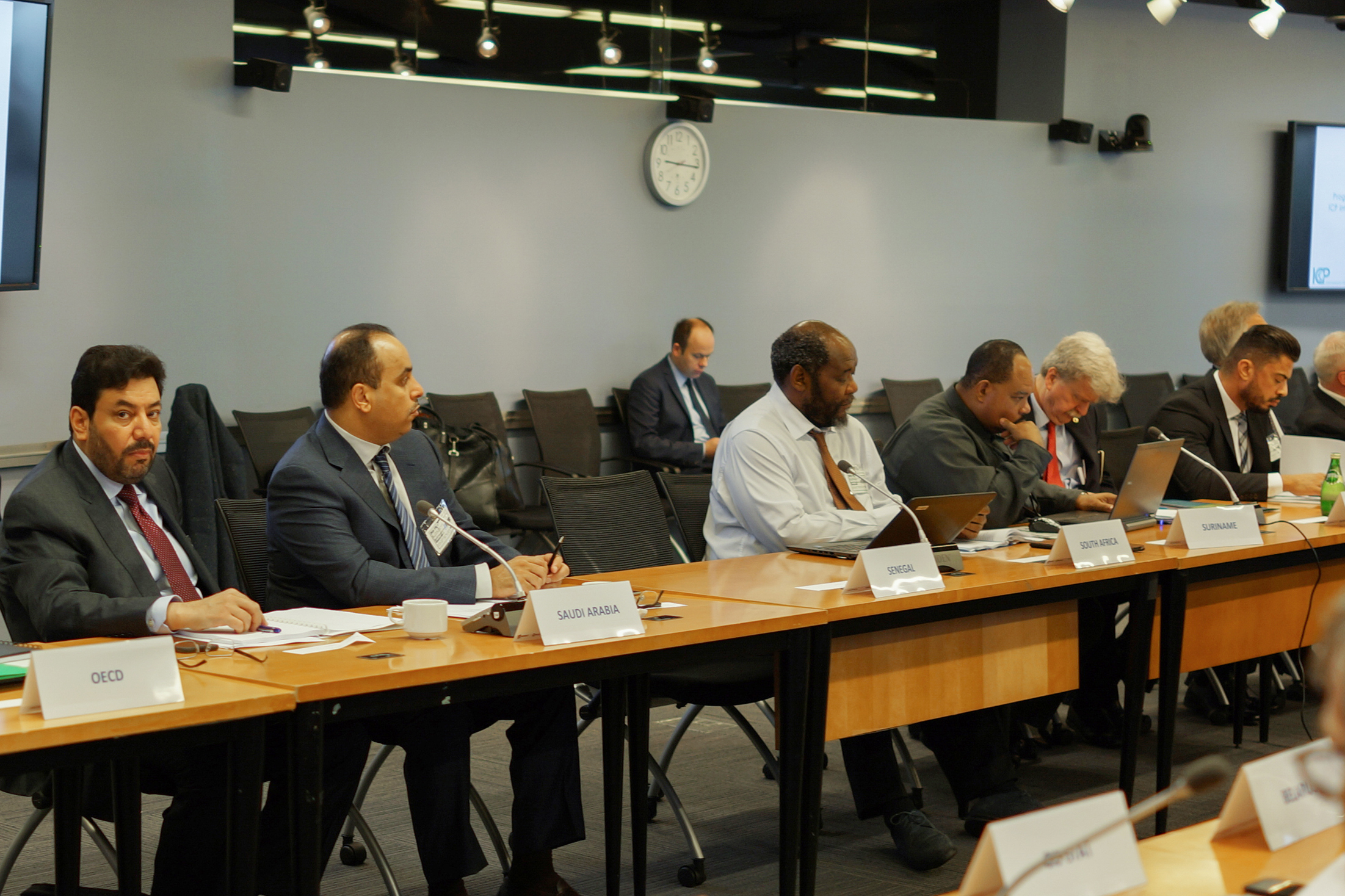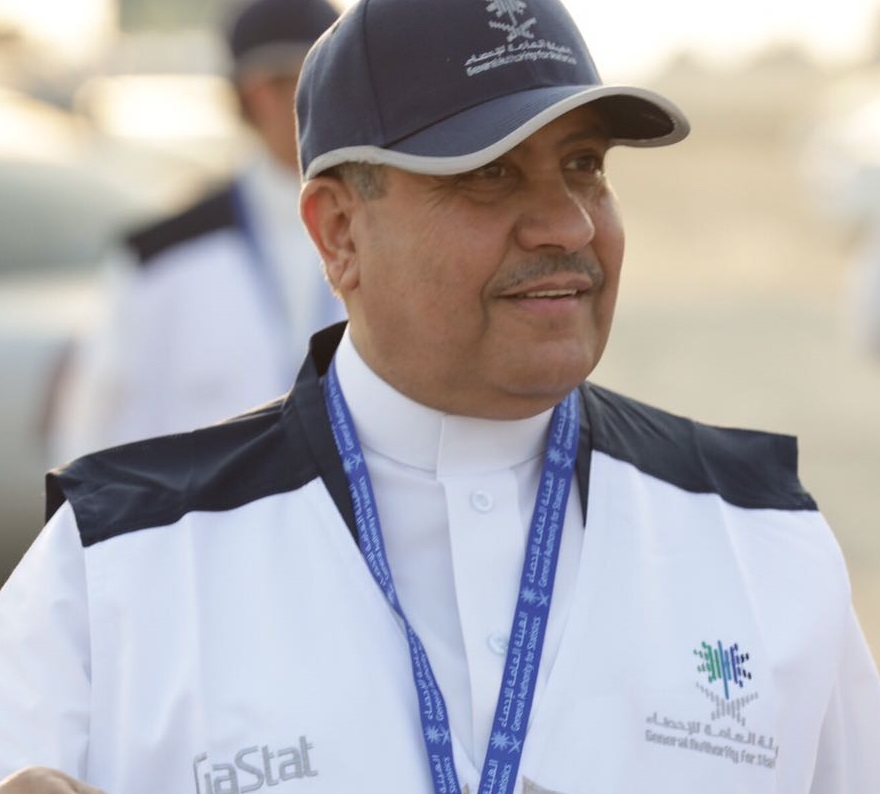GaStat: The Saudi unemployment rate is 12.8% in the 2nd Quarter (2017)
02-10-2017
Labor Market Bulletin Includes 67 Statistical indicators
GaStat: The Saudi unemployment rate is 12.8% in the 2nd Quarter (2017)
The General authority for Statistics (GaStat) published the Labor Market Bulletin for the second quarter of 2017 on Sunday Muharram 11th,1439H (Corresponding to October 1st,2017) which provides comprehensive data and indicators on the labor market in the Kingdom from April 1st to June 30th, 2017 (Corresponding to Rajab 15th to Shawwal 6th, 1438H) to support decision and policy makers regarding labor force. It also contributes in building a database on the labor market in the Kingdom that can be used to prepare and plan future social and economic development programs.
The quarterly bulletin includes 67 statistical indicators which contain data and indicators from the Labor Force Survey estimates and labor market data from the administrative records of the relevant entities (Ministry of Labor and Social Development, Ministry of Civil Service, General Organization for Social Insurance(GOSI), Human Resources Development Fund and National Information Center) applying international standards in this area.
The results of the bulletin for the second quarter of 2017 indicated that the total number of employees from the data of administrative records in the Kingdom of Saudi Arabia reached (13,841,158) individuals compared to (13,889,137) for the first quarter of 2017.
According to the results of the bulletin also from the data of administrative records in the government agencies for the second quarter of 2017, the total number of Saudis seeking work reached (1,075,933) individuals, (216,352) of them are males and (859,581) are females.
The results also showed that the highest percentage of Saudis seeking employment was among the age group (25-29), which is (34.2%). Also according to the results of the administrative records data, nearly half of the Saudi job seekers hold university degrees reaching (50.5%).
The results of the bulletin showed that the unemployment rate in Saudi Arabia for the Saudi population (15 years and over) from the Labor Force Survey estimates for the second quarter 2017 reached (12.8%), (7.4%) are males and (33.1%) are females. And the unemployment rate in the Kingdom for the total population (15 years and over) is (6.0%), (3.3%) are males and (22.9%) are females.
The results also showed that (11.6%) of the unemployed Saudis had previously worked, and (32.9%) of unemployed Saudis who had previously worked left their jobs due to dismissal from the employer. The survey results also showed that (9.6%) of unemployed Saudis have already been trained.
Regarding the economic activity rate of total population (15 years and over) it reached (54.2%), divided between males (78.2%) and females (18.7%). In its bulletin, GaStat also explained that the economic activity rate for total Saudi population (15 years and over) reached (40.3%).
The bulletin included a large number of detailed data on workers according to the regulations they are subject to, nationality, sex, age, administrative region and educational level, as well as data for job seekers, average monthly wages, working hours and domestic workers.
For more details, you can view the bulletin through Gastat’s official website: www.stats.gov.sa

Dr. Altekhaifi: KSA's distinctive work at statistics leads to council membership and participation in recurring meetings
19-09-2017
UN International Comparison Program board of directors holds second meeting
Dr. Altekhaifi: KSA's distinctive work at statistics leads to council membership and participation in recurring meetings
Saudi Arabia has participated at the second meeting of the board of directors of the International Comparison Program (ICP), which was held at Washington D.C. early this week. His Excellency, president of the General Authority for Statistics, Dr. Fahad bin Sulaiman Altekhaifi, confirmed that the program’s work and results will help shape policies for global comparison to support statistical products of the participating countries. It will also enable the General Authority for Statistics to access the best global practices for statistics for the purpose of improving and developing the statistical work. Also, it will raise the quality of the data, which will reflect positively on the decisions for development that rely mainly on statistics.
On the other hand, his excellency Dr. Altekhaifi pointed out that the board of directors, which has 11 countries including Saudi Arabia, which represents west Asia, has looked into the progress made when implementing the 2017 cycle in the participating areas. The council also specified a list of research topics including, implementing a rolling survey approach and building Purchasing Power Parity (PPP) time series, integrating ICP and Consumer Price Index (CPI) activities, Streamlining the process of establishing product lists and the use of importance indicators, improving the availability and quality of input data for rents, government services, and construction, streamline the use of productivity adjustments for government services, fine tuning global linking procedures, quality assurance of resulting PPPs and measures of reliability and other topics related to statistical work.
Dr. Altekhaifi added that the ICP selecting of Saudi Arabia for the membership at the 2017-2019 cycle came as a result of the positive role of the General Authority for Statistics in different statistical programs organized by the UN. It also confirmed the kingdom’s effective role on the global map of statistics. Moreover, it reflects the results of the strategic transformation of the kingdom’s Statistic sector, which the leadership cares for and supports due to its role in aiding the national development decisions. The ICP, which is under the supervision of the World Bank, is a partnership program for statistics on a global level. It is based on a statistical system that is connected with economic analysis. It uses statistical methods to derive the necessary data to calculate the PPP for about 200 countries and economies worldwide. It will facilitate the use of PPP as currency converters. That will allow for the comparison of the total economic indicators and the economic situations of countries worldwide.
It is noteworthy to mention that the ICP board of directors is compiled of executives, chairpersons, and leading experts in 11 statistical devices participating in the program. They are distributed according to the regional areas: Africa, Asia, Pacific Islands, Latin America, the Caribbean, West Asia, Commonwealth of Independence States, European Union, non-European Union States, members of the organization for Economic Cooperation and Development, representatives of the International Monetary Fund, World Bank, UN Statistics Division, and the Inter-Agency Coordination Group.

" الإحصاء ": الإعلان النهائي لأعداد حجاج 1438 هـ بعد مغيب شمس يوم عرفة
12-09-2017

Saudi Arabia has been honored to serve nearly 24 million pilgrims in 10 years
12-09-2017
GaStat Enumerates Pilgrims Every Year
Saudi Arabia has been honored to serve nearly 24 million pilgrims in 10 years
According to the official statistics of the General Authority for Statistics (GaStat), the total number of pilgrims that Saudi Arabia has been honored to serve during the last ten years has reached 23,935,354 pilgrims. The last Hajj season (1437H) recorded the lowest number of pilgrims during the last ten years as it reached 1,862,909 pilgrims. While the year (1433H) recorded the highest number of pilgrims during the last ten years as it reached 3,161,573 pilgrims.
The official spokesman of Gastat, Mr.Taiseer Almofarrej, explained that the task of pilgrims enumeration every years is one of the tasks that Gastat has the honor of. It started since 1390H since Gastat was called (the Central Department of statistics), in order to provide accurate information that helps all state agencies in planning and development of everything related to serving Hajj visitors. This mission continued during all these years to witness developments and enhancements in the enumeration techniques every year to be more accurate and comprehensive. Mr. Almofarrej added that the Hajj statistics program aims at the completion of all future planning programs to ensure providing the necessary services needed by the guest of Makkah, whether social, health, security, food, or transportation services. This is done through using a time series of accurate data about the number of pilgrims, in addition to the estimation of labor forces needed for providing the necessary services for pilgrims during Hajj season every year. The data and number of pilgrims is also used by relevant systems who studies the preparations and main facilities in Makkah city and holy places, and take it into consideration when preparing the necessary plans. In addition, accurate data and information about Hajj statistics is provided to researchers, students, and individuals who are interested in this field. The data is also used in the evaluation of activities and events made by relevant entities who serve pilgrims, in addition to identify the method of arrival of domestic and international pilgrims.
The official spokesman stressed that GaStat will be announcing the number of pilgrims periodically starting from the 1st of Dhu al-Hijjah. GaStat will also announce the final and official number of pilgrims on the evening of the ninth day of Dhu al-Hijjah through the Hajj statistics bulletin. The Bulletin will include detailed results about: number of domestic pilgrims, international pilgrims, pilgrims by gender, pilgrims by nationality, pilgrims by arrival destination, number of cars carrying pilgrims by type, and other detailed data.
It is worth mentioning that the number of pilgrims in the last ten years exceeded 3 Million pilgrims in one time, and it exceeded 6 Million pilgrims 6 times. The number was lower than 2 Million in 3 Hajj seasons, and last year was the lowest according to the following table:
